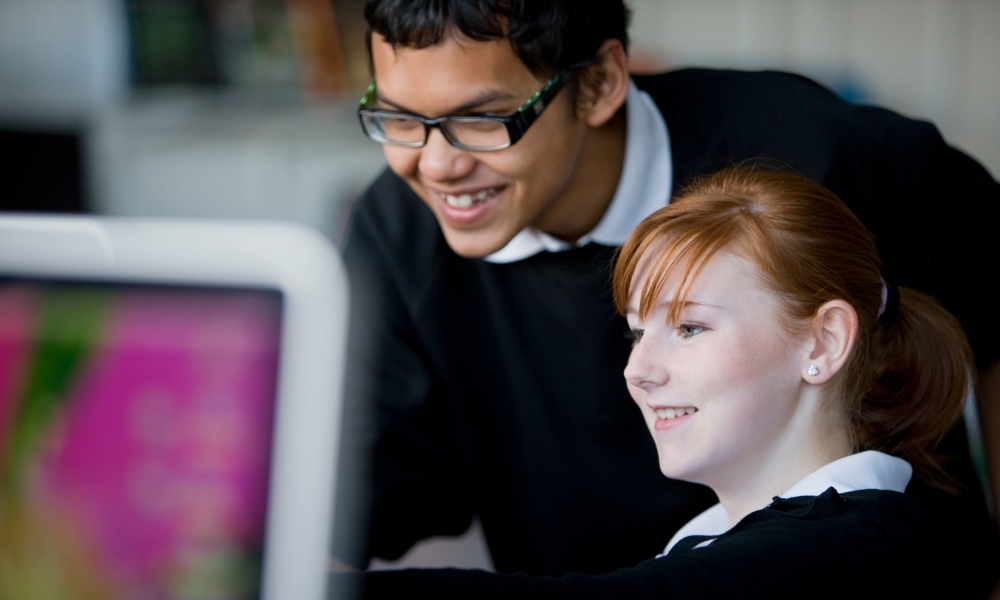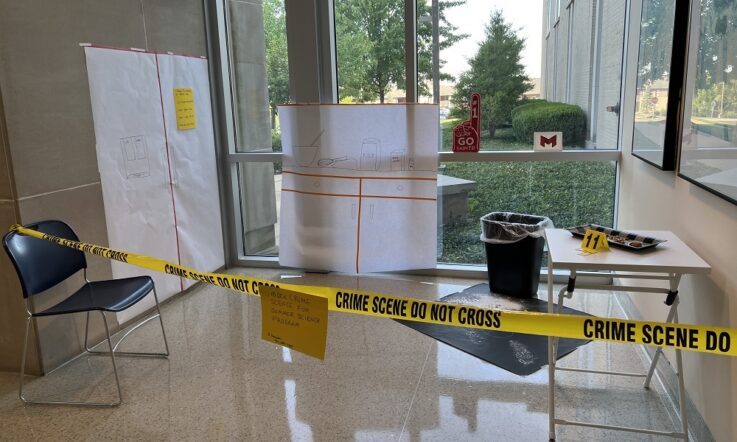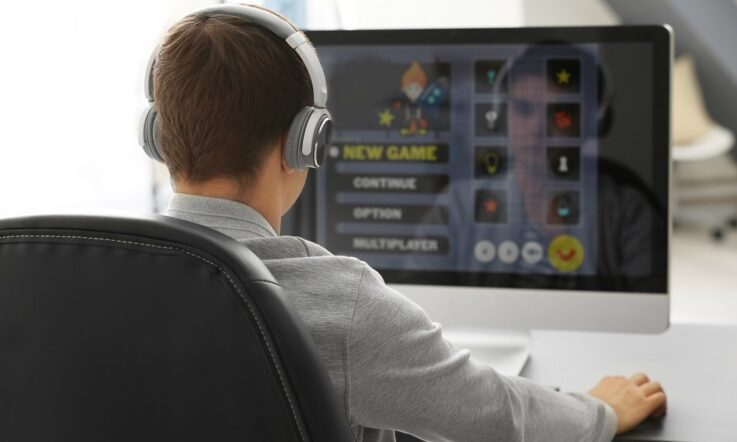The project Exploring Problem Based Learning in Schools, sees teachers and academics working together to develop a pedagogical framework for the design and implementation of authentic and relevant school-based STEM learning, consistent with the principles of a Problem Based Learning (PBL) model of STEM education.
In this article, the second in a series of three, 4 participating teachers, working as co- researchers in the project, discuss how the research-informed principles of practice for a PBL model of STEM education have enabled them to reconsider their teaching practice and the conditions necessary for meaningful STEM learning.
Learning about the principles of PBL
Stephen Manitta – Thomas Carr College, Melbourne
PBL has been around for many years, yet as a contemporary educator who aspires to use current pedagogical practices, I realised there was more I needed to understand about this approach. Within the first 2 professional learning days of the program, my colleagues and I were challenged to consider our current understanding of PBL, and the STEM education practices within our school. We then shared these insights with educators from other schools.
From this initial collaboration, we took away 2 major points: (1) the context of PBL shapes the nature of the learning which takes place; (2) integrated and standalone approaches to PBL seem to be most common.
We then began work on our research into PBL, developing an action plan which sparked further conversation and analysis of our school context. We deconstructed the 4 defining research-based principles of PBL developed by the Monash team: flexible knowledge skills and capabilities; active and strategic metacognitive reasoning; collaboration based on intrinsic motivation; and, rich and relevant learning contexts. We used this knowledge to guide our thinking, planning, execution and critical review of implementing a STEM PBL program within our college.
We considered our existing approaches to student decision-making and problem-solving, realising that ‘flexible knowledge, skills and capabilities’ are just as crucial for teachers delivering the program as for students participating. Focusing on ‘active and strategic metacognitive reasoning’ drew our attention to ensuring school-based programs were age and ability appropriate with targeted cohorts. The principle of ‘collaboration based on intrinsic motivation’ extended our understanding of what true collaboration looked like and we quickly realised this to be an area our school needed to focus on.
We are now inspired to shift our practices to become more dynamic and flexible, and we have developed a much deeper understanding of what PBL may look like within the classroom. We know making learning meaningful for our students means we must utilise relevant learning contexts, and this means linking to real-world situations. We emphasise cross-curricular connections and engage students in deep thinking to evaluate multiple solutions.
We have become more mindful of the importance of self-reflection and metacognition for our students and ourselves. Yet, the success of new programs does not come without challenges. Time is required – to not only build such meaningful programs, but also ensure these opportunities are effectively embedded within a rich learning culture at our college.
Insights about the PBL principles
Spiro Kalantzis – St Monica’s College, Melbourne
Participating in the project significantly impacted my understanding of PBL in secondary school-based STEM education.
I believed STEM education involved student-centred, process-based pedagogy designed to enable students to apply their Science, Digital Technology, Engineering, and Mathematics knowledge to real world problem-solving. Developing and applying specific STEM skills was also essential, particularly collaboration, communication, creativity, and critical thinking. However, 3 key principles of PBL in STEM raised further considerations for my teaching: flexible knowledge, skills, and capabilities; active and strategic metacognitive reasoning; and, collaboration based on intrinsic motivation.
Serving as a lens for further exploration and refinement of my practice, these principles helped me organise my prior knowledge, understand more clearly the intended nature of student learning, and inform my decision-making as a STEM educator.
Understanding the role of flexible knowledge, skills, and capabilities impacted my classroom practice in ways I had not planned. When a student crashed a tethered plane due to an inaccurate flight path measurement, this raised the importance of encouraging students to learn from their mistakes and persevere as a means of developing their agency and self-directing their learning trajectory. I discerned from this event that embracing failure as a learning opportunity supported the development of flexible knowledge, skills and capabilities and perseverance – all drivers of intrinsic motivation. Understanding the interrelationship of the PBL principles clearly defined the conditions required for effective STEM learning.
The importance of learning partnerships in PBL in STEM also emerged as essential. While clear learning intentions, planning, and self-reflection are vital for educators, student feedback becomes critical in PBL, providing a necessary mechanism of assessment. Students, when engaged in hands-on constructivist learning experiences, prefer guidance from teachers and therefore my role is to provide students with opportunities to apply their knowledge and skills to create solutions through design thinking and science inquiry processes. PBL in STEM allows me to guide student construction of knowledge and the development of student agency.
Articulating the role of metacognitive reasoning in PBL in STEM
Daniel Green and Michael Ling – St Peter’s College, Melbourne
The guiding principles that came out of this project enabled us to better articulate the conditions in which we found PBL to be effective. This allowed us to deconstruct our goals and strategies and understand the nature of our struggles, and why we were not making more progress in some areas. We were then able to instigate targeted strategies to improve our implementation of PBL and, as a result, improve student learning.
At the beginning of our journey and exploration of PBL in STEM, our focus was keenly set on enhancing student engagement by creating rich and relevant problems, whilst also providing opportunities for students to develop a range of skills and literacies, such as collaboration, critical and creative thinking.
We reflected on and evaluated the teaching and learning within our program, and were always pleased that we met these objectives. We observed increased levels of active participation and collaboration between students as they moved towards their solutions. We noticed that some students were far more successful than others. There was a clear divide between those who would make insightful solutions and those who seemed to deal with the problem superficially.
Through these observations, we identified both the importance of active and strategic metacognitive reasoning and the challenges in developing this thinking in students. The students who performed best were already equipped with knowledge and skills that allowed them to deconstruct problems in order to consider them more deeply and form alternative viewpoints.
Since this time, we have focused on how students can learn and demonstrate knowledge that will be key to their success when they are required to critically evaluate problems, as well as the solutions they produce. Hurdle tasks now highlight key knowledge that is necessary for students to engage with the problem on a deeper level, requiring them to practice metacognitive reasoning through evaluation, linking or synthesis of ideas. These hurdle tasks also provide teachers with evidence to differentiate and provide formative feedback. While hurdle tasks have become more specific, controlled and targeted, we have also increased the complexity and ambiguity of the larger overarching problems to encourage students to exercise their creative and critical thinking skills.
As we evaluated our practice throughout this project, it became clearer that our students’ ability to achieve success in PBL required them to have a deeper understanding of themselves and the strategies that work best for them to optimise their learning. This emphasised the importance of developing students’ capacity for metacognitive reasoning and self-regulation.
While the motivating scenarios and methodologies students engage with in PBL are important, the ability to focus on goals and implement strategies to meet these are arguably more essential to long-term success, especially when motivation inevitably begins to wain and distractions appear to be more attractive than the big picture.
Stay tuned: In the next and final article of the series, teachers participating in this project explain how the experience of researching PBL in their STEM teaching has enabled them to consider student agency as a necessary condition for meaningful STEM learning. Teachers share their learning about how attending to this pedagogical intention in STEM education can be supported and further developed by the principles of practice which frame a PBL approach.



